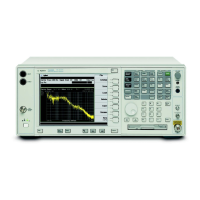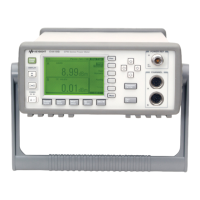310 Chapter 5
Programming Fundamentals
Using the LAN to Control the Instrument
Programming Fundamentals
3. At the password prompt, enter: service
You are now in the instrument /users directory and can get files
from the instrument. The ftp commands in the following steps may
not all be available from your controller. To show the ftp commands
available on your system, type help at the prompt. To end the ftp
session, type quit.
NOTE Do not delete files from this directory. Most of the files are required for
instrument operation, and for the operation of optional personality
modes.
4. cd userdir (change to the directory where data files are saved)
5. ls (list all available files, ls -la shows file permissions)
6. bin (change to the binary file transfer mode)
7. get myfilename (enter the file name; the name is case sensitive)
This “gets” (copies) your file. The file is copied to the location you
were pointing to when you started the ftp process. To query the
current location, enter lcd . (include the period). To change the
current location, enter the desired path/directory location as follows:
lcd C:\my path\mydir
NOTE To use a web browser for this example, enter:
ftp://vsa:service@141.88.163.118/userdir
The Standard UNIX FTP Command:
Synopsis ftp [-g] [-i] [-n] [-v] [server-host] [-B
DataSocketBufferSize]
Description The ftp command is used to transfer files using the File
Transfer Protocol. ftp transfers files over a network connection
between a local machine and the remote server-host.
Options and Parameters When ftp is invoked with a server-host
specified, a connection is opened immediately. Otherwise, ftp waits for
user commands.
The following options are supported:
-g disables expansion of shell metacharacters in file and
directory names
-i disables prompts during multiple-file operations
-n disables automatic log-in
-v enables verbose output

